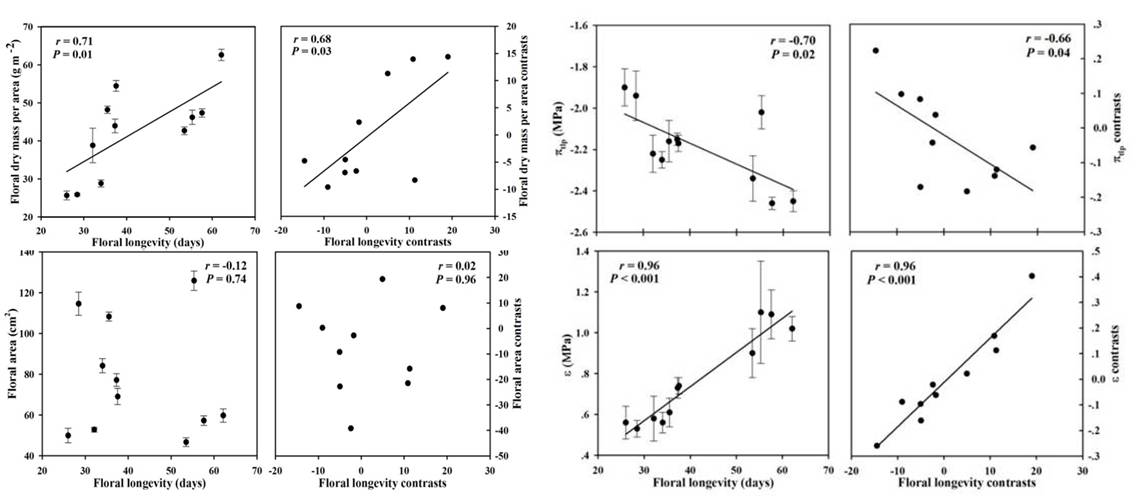Water stress is known to cause xylem cavitation in the leaves, roots and stems of plants, but little is known about the vulnerability of flowers to xylem damage during drought and the supply and maintenance of water in flowers. This is an important gap in our understanding of how and when plants become damaged by water stress.
Recently, Prof. ZHANG ShiBao’s group from Kunming Institute of Botany, Chinese Academy of Sciences (KIB/CAS) and Prof. Timothy J. BRODRIBB from University of Tasmania address fundamental questions about if and when flowers suffer cavitation damage, using a new technique of cavitation imaging to resolve the timing of cavitation in water-stressed flower petals compared with neighbouring leaves.
Leaves and flowers from a sample of two herbaceous and two woody eudicots were exposed to a severe water stress while the spatial and temporal propagation of embolism through veins was recorded. There was no significant difference between the average vulnerability of leaves and petals of herbaceous species.
In both woody species, petals were more vulnerable to cavitation than leaves. Similar cavitation thresholds of flowers and leaves in the herb sample suggest that cavitation during water shortage in these species will occur simultaneously among aerial tissues. Species-specific differences in the cavitation thresholds of petals provide a new axis of variation that may explain contrasting flowering ecology among plant species.
Floral longevity (FL) determines the balance between pollination success and flower maintenance. While a longer floral duration enhances the ability of plants to attract pollinators, it can be detrimental if it negatively affects overall plant fitness. Longer-lived leaves display a positive correlation with their dry mass per unit area, which influences leaf construction costs and physiological functions. However, little is known about the association among FL and floral dry mass per unit area (FMA) and water maintenance traits.
Prof. ZHANG Shi Bao group investigated whether increased FL might incur similar costs. 11 species of Paphiopedilum (slipper orchids) considered the impact of FMA and flower water-maintenance characteristics on FL were assessed. It was found a positive relationship between FL and FMA.
Floral longevity showed significant correlations with osmotic potential at the turgor loss and bulk modulus of elasticity but not with FA. Neither the size nor the mass per area was correlated between leaves and flowers, indicating that flower and leaf economic traits evolved independently. Therefore, these findings demonstrate a clear relationship between FL and the capacity to maintain water status in the flower. These economic constraints also indicate that extending the flower life span can have a high physiological cost in Paphiopedilum.
These studies entitled “Are flowers vulnerable to xylem cavitation during drought?” and “Floral mass per area and water maintenance traits are correlated with floral longevity in Paphiopedilum (Orchidaceae)” have been published in Proceedings of the Royal Society B (http://rspb.royalsocietypublishing.org) and Frontiers in Plant Science (https://doi.org/10.3389/fpls.2017.00501).
These studies were supported by the National Nature Science Foundation of China and a visiting scholarship from Chinese Academy of Sciences.

Fig. 1. Spatio-temporal maps showing the initiation and propagation of cavitation in leaf and petal (Image by KIB)
Fig. 2. The relationship between floral longevity, floral dry mass per unit area (FMA) and water maintenance traits (Image by KIB)
Contact:
Key Laboratory of Economic Plants and Biotechnology
Kunming Institute of Botany, Chinese Academy of Sciences, Kunming.
Prof. Dr. ZHANG Shi Bao
Email: sbzhang@mail.kib.ac.cn




